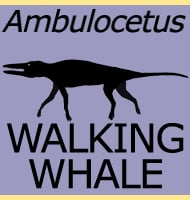Ambulocetus
In Depth Ambulocetus is a very important transitional fossil as it displays the link between terrestrial mammals and the early whales. Ambulocetus acquired its name from the idea that it could both swim by undulating its back as well as leave the water and walk on land. However a 2016 study by Ando & Fujiwara … Read more
